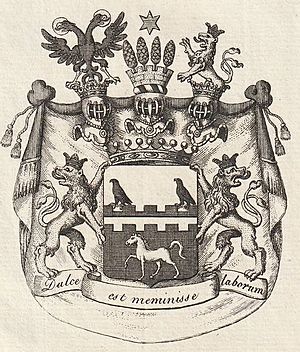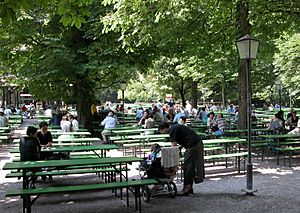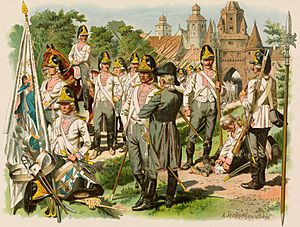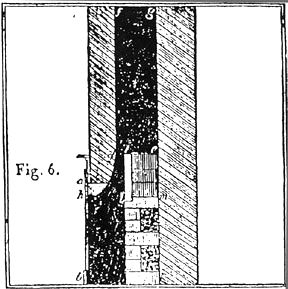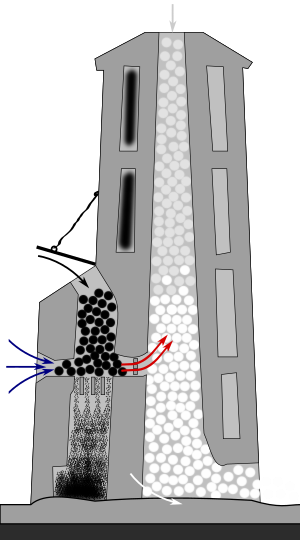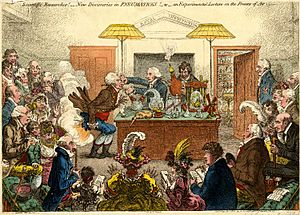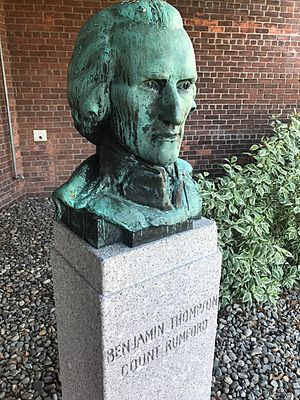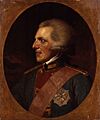Benjamin Thompson facts for kids
Quick facts for kids
Sir Benjamin Thompson
|
|
|---|---|
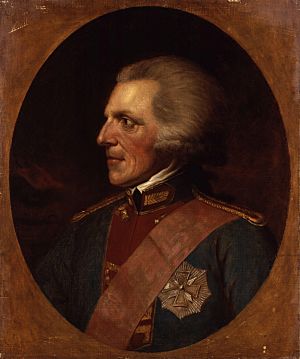 |
|
| Born | March 26, 1753 |
| Died | August 21, 1814 (aged 61) |
| Nationality | British |
| Known for | Thermodynamics |
| Awards |
|
| Scientific career | |
| Fields | Physics |
| Influenced | Humphry Davy |
| Signature | |
Sir Benjamin Thompson, also known as Count Rumford, was a brilliant British physicist and inventor. He was born in America in 1753, when it was still a British colony. He made big discoveries about heat and how it works, which helped change how scientists understood thermodynamics.
During the American Revolutionary War, he worked with the British forces. After the war, he moved to London and was knighted by King George III. Later, he moved to Bavaria (part of modern-day Germany). There, he helped reorganize the army and became a Count.
Contents
Early Life and Discoveries
Benjamin Thompson was born in a small town called Woburn on March 26, 1753. His childhood home is now a museum. He went to the village school, but he was very curious. Sometimes, he walked almost ten miles to Cambridge to listen to science lectures at Harvard College.
When he was 13, he started working for a merchant in Salem. This job helped him meet educated people and sparked his interest in science. Even when he was recovering from an injury in 1769, he did experiments about heat. He even wrote letters to others about his findings!
In 1772, his life changed when he married Sarah Rolfe, a wealthy woman. They moved to Portsmouth. Through his wife's family, he became a major in the local army. Their daughter, Sarah, was born in 1774.
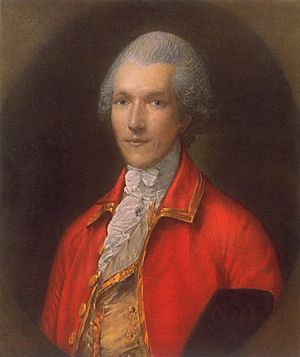
During the American Revolution
When the American Revolutionary War began, Benjamin Thompson was against the American uprising. He helped recruit people who wanted to stay loyal to Britain. This made some people angry, and a crowd even attacked his house. He had to leave his wife and flee to the British side.
The British welcomed him because he had useful information about the American forces. He became an advisor to important British generals. While working with the British army, he did experiments to measure the power of gunpowder. His results were published in 1781 and made him famous as a scientist in London.
Life in Bavaria
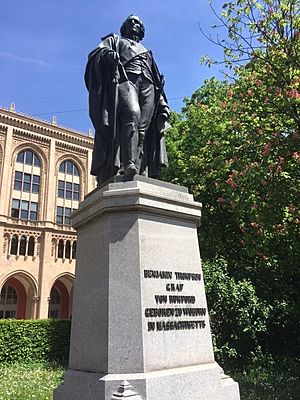
In 1785, Benjamin Thompson moved to Bavaria. He became an assistant to the ruler, Prince Charles Theodore. He spent 11 years there, making many improvements. He reorganized the army and set up workhouses to help the poor.
He also invented "Rumford's Soup," a special soup for the poor. He encouraged people to grow and eat potatoes in Bavaria. He studied how to cook, heat homes, and light rooms more efficiently.
In 1789, he helped create the Englischer Garten in Munich. This huge park is still one of the biggest public parks in the world today. For all his hard work, he was made a Count of the Holy Roman Empire in 1791. He chose the name "Rumford" after the town in New Hampshire where he had been married.
Science and Inventions
Benjamin Thompson was a very busy inventor and scientist. He made many useful things and studied how heat works.
Experiments on Heat
His work with gunpowder made him very interested in heat. He figured out a way to measure how much heat a solid material could hold. He also studied how different materials, like fur and wool, keep things warm. He realized that these materials trap air, which stops heat from moving around.
He even experimented with cooking. He is thought to be the founder of the sous-vide cooking method. This is where food is cooked slowly in a water bath. He described this method in one of his writings.
Heat as Motion
One of Rumford's most important scientific ideas was about the nature of heat. At the time, many scientists thought heat was an invisible fluid called "caloric." But Rumford believed heat was a form of motion.
He proved this with a famous experiment in Munich. He watched cannons being drilled and noticed how much heat was created by the friction. He put a cannon barrel in water and used a special dull drill. He showed that the friction from drilling could make the water boil in about two and a half hours! He argued that if heat was a fluid, it would eventually run out. But since the friction kept producing heat, it must be caused by the motion itself. This idea was very important for understanding the laws of conservation of energy later on.
Inventions for Everyday Life
Thompson was a very practical inventor. He made many improvements to things we still use today:
- Fireplaces: He designed the "Rumford fireplace," which became very popular in London. He made the chimney opening smaller and angled the side walls. This made the smoke go up the chimney better and heated the room more efficiently. Many fancy houses in London were changed to his design.
- Kitchen Items: He invented the double boiler, a better kitchen range, and a drip coffeepot.
- Clothing: He is also credited with inventing thermal underwear to help people stay warm!
He was a bit like Benjamin Franklin, who also invented a new kind of heating stove.
Industrial Furnaces
Thompson also improved the design of large ovens called kilns. These kilns were used to make quicklime, which is used in building. His new design kept the burning fuel separate from the limestone. This meant the quicklime produced was cleaner and not mixed with ash. These "Rumford furnaces" were built all over Europe.
Measuring Light
Rumford also worked on measuring light, which is called photometry. He created a special device to measure light and introduced the "standard candle." This was a specific type of candle used to measure the brightness of light. It was the first step towards the modern unit of light intensity, the candela.
Later Life and Legacy
After 1799, Benjamin Thompson spent his time between France and England. In 1799, he helped create the Royal Institution in Great Britain. This institution became very famous for its scientific research and public lectures. Famous scientists like Humphry Davy and Michael Faraday worked there. The Royal Institution still gives popular Christmas lectures today, which are even shown on TV!
Thompson also set up special awards for scientists, called the Rumford medals, at the Royal Society and the American Academy of Arts and Sciences. He also created a special teaching position (a "chair") for physics at Harvard University.
In 1804, he married Marie-Anne Lavoisier, the wife of a famous French chemist named Antoine Lavoisier. (His first wife, Sarah, had passed away in 1792.) He later separated from his second wife but continued his scientific work in Paris until he died on August 21, 1814. He is buried in a small cemetery in Paris. His daughter, Sarah, inherited his title and became Countess Rumford.
Honours
- Colonel in the King's American Dragoons.
- Knighted by the King in 1784.
- Became a Count of the Holy Roman Empire in 1791.
- A crater on the Moon is named Rumford after him.
- Rumford baking powder (invented in 1859) is named after him.
- The Rumford Kitchen was featured at the World's Fair in Chicago in 1893.
- A street in Munich, Germany, is named after him.
- Rumford Street in Liverpool, England, is named after him because a soup kitchen based on his ideas used to be there.
- He received the Order of the White Eagle from the Polish-Lithuanian Commonwealth in 1789.
See also
 In Spanish: Benjamin Thompson para niños
In Spanish: Benjamin Thompson para niños
Images for kids


